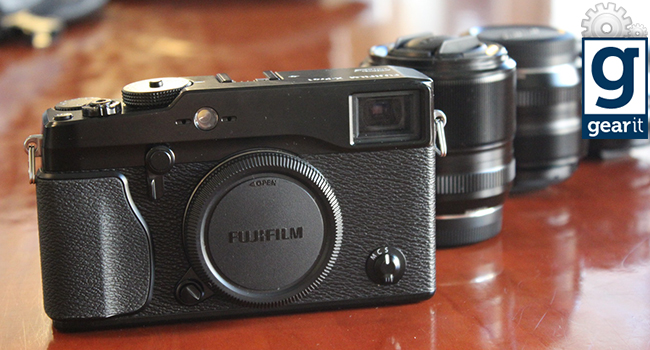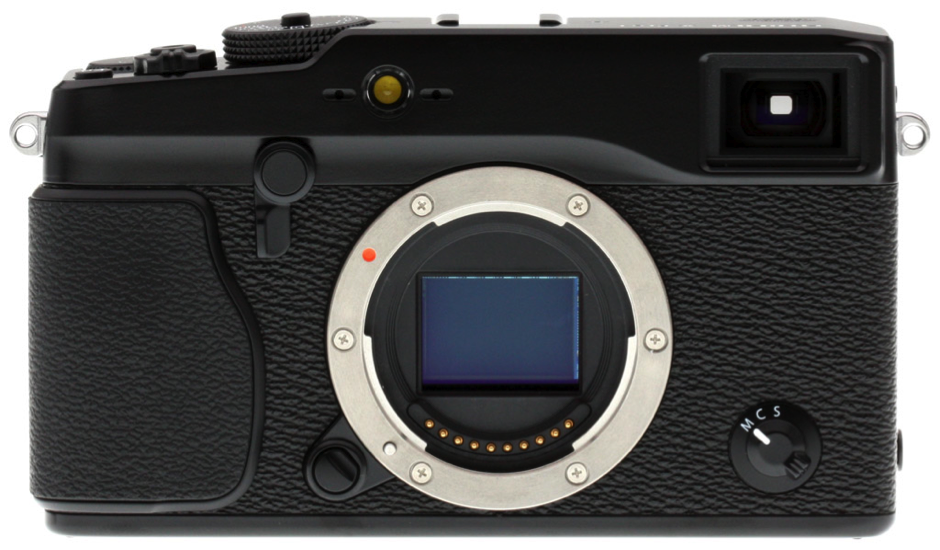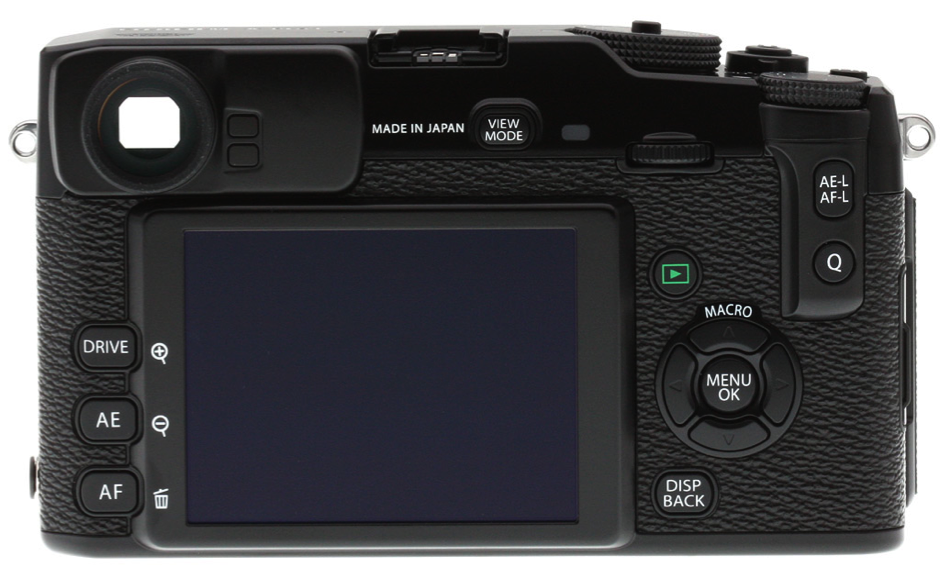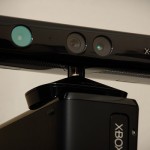Side hustles are no longer optional in South Africa. With food inflation still above 8 percent and electricity, transport and mobile data costs climbing…
The Fujifilm X-Pro1: so much more than just a pretty face


Not counting hipsters and sentimentalists, photographers are roughly divided into 2.5 respective groups – pros, amateurs, and everything in between.
Fujifilm’s latest offering from its X-series is aimed firmly at the first group but its gorgeous retro styling, usability and stunning picture quality make it as attractive to the latter groups. Although if you’re not serious about your craft, the price might make you think twice.
The seductively-designed, heftily priced shooter is essentially the first professional-level, mirrorless, interchangeable lens camera and comes with all the bells and whistles you’d expect from such an offering. Here’s the nitty-gritty*:
- Fujifilm-designed 16MP APS-C X-Trans CMOS sensor
- Novel colour filter array to suppress colour moiré, no optical low-pass filter
- EXR Processor Pro image processor
- Dual-magnification hybrid optical / electronic viewfinder
- Analogue dials for shutter speed and exposure compensation on top of camera
- All-new, fully electronic X lens mount; 17.7mm flange-to-sensor distance
- Three ‘XF’ lenses at launch: XF 18mm F2 R, XF 35mm F1.4 R, and XF 60mm F2.4 R Macro
- Prime lenses have traditional-style aperture rings (1/3 stop increments) and large manual focus rings
- Revised rear-panel control layout
- On-screen ‘Q’ control panel and redesigned tabbed menu system
- Focal-plane shutter, 1/4000 sec max speed
- 3.0″ RGBW 1.23M dot LCD
*Spec list taken from DP Review
Design and Build
The first thing that struck me about the X-Pro1 was its size. Judging by images I had seen beforehand, and the category it falls under, I had it assumed it would be a bit smaller. It’s by no means a huge camera (140 x 82 x 43 mm), and is still considerably smaller than your average DSLR, it just wasn’t as small as I had expected or hoped. That being said, I quickly got used to holding and handling it and its size is definitely not something that should put you off.
I’ve said it before, and I’ll it again, the X-Pro1 looks amazing. Fujifilm managed to perfectly capture all that was right with retro design and meld that with contemporary materials, producing a camera that looks as good as it feels and performs. Much like its counterparts from yesteryear, it’s laden with physical buttons which allow you to control and manipulate just about every aspect of any given shot, and change and adjust all of your personal preferences.
The layout of the camera is relatively standard. The front is relatively bare, leave for a few functional switches – at the bottom right you’ll find the focus mode selector, which switches between single AF, continuous AF and manual focus; near the top of the camera, to the left of the lens is the viewfinder selector, which switches between the optical and electronic viewfinders, the only other button is the lens release button, situated at the bottom left of the lens ring. The optical viewfinder is positioned in the top right hand corner and the AF assist illuminator is just to the left of the centre at the top of the camera, it’s flanked by stereo microphones.
The top of the camera is where a large part of the action takes place. As is the case with most cameras, the X-Pro1 is geared for right-handed shooters, leaving the left half of the camera completely bare. The right half is a different story altogether. In the top right corner is the Fn (function) button, an awesome little button for you can assign just about any role which can be very useful when used correctly. Just to the left of that is the shutter button which is encircled by the ON/OFF switch, the former is threaded to allow for remote-release. Moving to the left of that is the biggest dial on the camera, the shutter speed dial which ranges from 30”-1/4000, there’s a dial release in the centre of the dial which unlocks the dial after it has been turned to A (auto). Below and to the right of the shutter speed dial is the exposure compensation dial.
The back of the camera houses a further array of buttons, but thankfully those, leave one, are labelled so we’ll just look the function of each. The unlabelled dial, which sits pretty much under the tip of your thumb when you’re holding the camera, is the command dial, which is used for uh, basic commands – navigating menus, viewing pictures and selecting options. Moving on to its labelled counterparts, the view mode button controls the very clever, hybrid optical/electronic viewfinder and allows you to switch between the automatic setting, viewfinder only and the LCD monitor only. I found the hybrid viewfinder to be very useful as it literally displays all of the info you’d normally see on the LCD screen right in the viewfinder without changing the layout, very nifty. The AE-L/AF-L button determines the focus lock and exposure, but can also be used to quickly focus on a subject when in manual focus mode. The Q button is another great little innovation on this camera. The Q stands for quick, quick menu to be exact, and when pressed instantly brings up a digital menu giving you access to a range of functions. The order of the items can easily be changed manually to cater to each user’s personal preferences. The playback, menu and display/back buttons are all rather self-explanatory. On the left side of the camera are three further buttons, drive, which brings up the drive options (single shot, continuous shot, panorama etc.), AE, autoexposure and AF autofocus.
From the left side (when pointing the camera away from you) around the bottom and to the right side of the camera you’ll find, respectively, a speaker, the sync terminal, a tripod mount, the battery/memory card chamber, a DC coupler, the HDMI mini connector and the USB connector.
Enough of the technical stuff, let’s move onto taming, and using the beast.
Hands-On, Ease Of Use and Operation
If you’re not at least familiar with the fundamentals of photography, the X-Pro1 can seem like a daunting camera, because it is. Immediately you’re met with a multitude of buttons, knobs and dials, unsure which to push first and too scared to adjust any. Yet, for all its complexity, if you can manage to find, and select, the two, red, capital As you’ll be set on full-auto and can happily snap away, knowing that the end result will be something of at least fair quality. You’d also completely be missing the point.
My personal knowledge of photography is amateur at best – I know enough to get by and I understand what I’m doing when I adjust certain settings, but I don’t always know what I’m doing. That being so, it took me take me a little while to familiarise myself with the X-Pro1, but once I had it was pretty much smooth sailing from there on out. The camera sat comfortably in my hands, and with my finger on the shutter button I set out for some test shots.
One of the great things about the ever-developing nature of technology is the way it makes things easier, point-in-case, the very easily adjustable drive mode. With literally the push of button you can instantly switch between multiple shooting modes, depending on the occasion. The sucker that I am, I went straight for motion panorama and was not disappointed even a single bit. Once in panorama you can select the angle thought which you want to pan as well as the direction in which you’re going pan. Once that’s set up, which takes about a second, a yellow guideline appears on the LCD screen along with a directional arrow, hit the shutter button to begin recording, pan the camera until it reaches the end of the digital guides and voila, you’re the proud creator of a beautiful, unique panorama. Seriously though, it’s that easy. The other drive modes work in much the same way and are as easy to use.
As mentioned above, a rudimentary understanding of photography is going to make using the X-Pro1 a lot easier. I really enjoyed being able to adjust almost all the settings manually instead of having to sift through digital menus and the two most commonly used features, aperture and shutter speed settings, are both handled with prominent, easy-to-use dials. The former sits on the lens, near the base, and the shutter speed dial is on the top of the camera, as picture and described earlier. Both dials have an auto setting which can be used to give the other priority, i.e. if shutter speed is set to auto, the camera takes care of that while you manipulate the aperture settings and vice versa.
The physical buttons are great and allow you to easily adjust settings on the fly without really interrupting your shoot. The only ‘edge’ that more digitally-inclined cameras may have over it is the ease of switching back to user-defined or default settings. With most of the current crop of DSLRs or compact cameras, you can switch back to full-auto or some user-defined choice with the touch of button, this is not exactly the case with the X-Pro1 as aperture, shutter and EV settings are determined by physical buttons and cannot be overridden electronically. This most likely won’t bother or deter professionals or more serious photographers, but it may frustrate amateurs as a forgotten setting my spoil a spontaneous shot.
Our review unit came bundled with all three the lens currently available for the X-Pro1, a 60mm f/2.4 Macro, a 35mm f/1.4, and an 18mm f/2.0. The latter, a pancake lens, is a great for wide angle shots and an obvious choice for panoramas. I found myself using it more than the other two lenses, but that’s more due to my personal preference. Most users will probably use the 35mm for the majority of the time. All the lenses performed exceptionally well, however there is a catch; they’re all primes (and not the Autobots kind). Basically, each lens has a set focal length which essentially means you can’t zoom in. I’m not going to get into the pros and cons of prime lenses, and again, I think it’s something that would bother amateurs and beginners more than their more experienced and learned counterparts. The biggest obstacle I found with this, was selecting the right lens at the right time. If you’re too slow changing a lens, or you initially choose the wrong one, you may just miss that perfect moment in time and lose an epic shot.
The X-Pro1 also boasts some fun, creative features like its selection of ten simulation filters which include old Fujifilm classics like Provia, Astia, and Velvia and contemporary favourites like Sepia and Monochrome. The multiple exposure feature will appeal to all you hip young guns, instead of going the traditional route and taking multiple shots without winding the film to the next frame, you simply take a shot, which is then super-imposed on the LCD screen, frame your next shot and boom, a perfect double-exposure shot, no risk involved! These only constitute the tip of the iceberg of the X-Pro1’s built-in creative capabilities and given some time, and some fiddling, you’ll find enough to keep you busy – and make your pics look arty – for hours.
Then there’s the video mode, which has become all but a necessity on modern cameras, which seems like the primary motivation for adding it to this particular unit. The X-Pro1 is a photographer’s camera first and foremost and it tends to show when you switch over to video mode. While filming you, have little control over settings as the exposure compensation and the aperture have to be set before you commence filming and cannot be adjusted without stopping the recording. The only option you have while filming is auto-focus, which is average and you can clearly hear the lens adjusting in your recorded footage. Video quality isn’t bad, but don’t expect to be shooting your first short-film on this unit, look for something more video-oriented if that’s your game.
The camera performed well under most conditions and easily handled just about anything I threw at it, however there were times when the auto-focus was sluggish which caused some frustration. The manual focus, which I only dabbled with in my bravest moments, also seemed that it struggled ever so slightly under certain conditions, bright light being one of them. Generally speaking though, the image quality was superb, and in most cases poor image quality was more a case of human error than it was due to technical deficiencies.
Conclusion
The X-Pro1 is a superb camera that has effectively created its own little niche market, its hybrid viewfinder and fresh stills-centric setup, together with its excellent image quality and almost unmatched styling, put it in a league of its own. Although it comes with a considerably large price tag (over R20k for the body with a single lens), it delivers the goods and looks great while doing so. It’s still cheaper than most of its DSLR contenders and matches their performance in most areas. I
s it for you though? That depends, I enjoyed my time with X-Pro1 immensely, however most of the time I’m more a point and shoot kind of photographer and probably wouldn’t use even half of the amazing features that I did while writing up this review. That considered I just couldn’t legitimately justify the purchase. If you’re serious about photography though, and you’re looking for a new rig, I’d recommend this in a heartbeat. It’s a sturdy, well-built camera that holds its own with the big boys and delivers near flawless images almost every time, and it looks great to boot!





